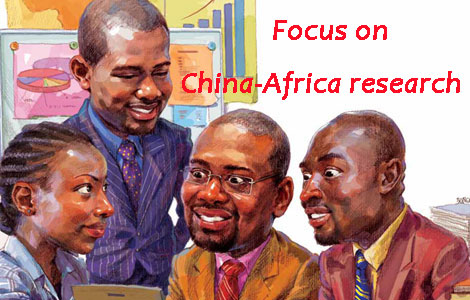Chinese in US schools: an idea already 140 years old
Updated: 2013-11-20 12:56
By Chen Weihua (China Daily USA)
|
||||||||
The Open Doors report released last week by the Institute of International Education is quite telling. The number of Chinese students studying in US universities and colleges jumped 21.4 percent in the 2012-13 academic year to 235,597 to be exact.
It means that 28.7 percent of all international students studying in the US are from China. The trend has been fuelled mainly by the growing number of Chinese pursuing undergraduate education in the US, who account for nearly 40 percent of the total Chinese in US universities and colleges.
Such momentum is expected to continue, as more and more Chinese parents can afford to send their children - often the only one in the family - to US schools. Many US schools are struggling with funding shortfalls and have cashed in on this group, which in general pays higher tuitions than their American counterparts.
As indicated by the IIE report, China did not send any students to the US from the 1950s until 1974-75, as relations between the two countries were cut off. Then, in the 1980s, the number of Chinese students going to the US increased dramatically.
In 1988-89, the Chinese mainland replaced Taiwan as the leading sender of students to the US and retained that status until it was displayed by Japan in 1994-95.

China recaptured the top spot in 1998-99, lost it to India 2001-02, who held it for eight years, and took it back again in 2009-10. China's growth has been unrivalled while India and the Republic of Korea, who took second and third place in the 2012-13 academic year, saw a decline in the number of students coming to the US.
In 1995-96, there were only 39,613 Chinese students studying in US universities and colleges. But it is hardly possible now to walk into a US college campus without bumping into Chinese students, whether you are in New York or New Mexico, Iowa or Idaho.
Few people might know, however, the New England city of Hartford, capital city of Connecticut, was where the first ever group of Chinese students arrived in the US - 140 years ago.
In the early 1870s, the teetering Qing Dynasty (1644-1911) was struggling to cope with domestic rebellion and foreign invasion. The surprising rise of the once peripheral Japan and concessions forced upon China by the British and French, who enjoyed extraterritoriality, had top officials of the Qing court deeply worried. They also realized the need for reform and to learn from the West.
So when Yung Wing - who at age 19 followed an American priest to the US in 1847 and in 1854 became the first Chinese to graduate from Yale College - proposed in 1868 to send young Chinese to study in the US, the imperial court agreed.
Before then, the Middle Kingdom long believed it had nothing to learn from the outside world.
For four years starting in 1872, the Qing court sent 120 boys aged 12 to 15 to the US in a fully government-funded program, aiming to let each study there for up to 15 years, from prep school through college.
The boys, arriving in Hartford, where many host families were waiting, were well received by the locals.
"These boys were in the heart of America in those days," said Liel Leibovitz, co-author of the book Fortunate Sons, which tells the story about the boys. He cited Mark Twain who lived in and praised Hartford by saying, "If you have ever seen Hartford, you never want to see another American town."
The boys adapted well to the local life, learning English, horseback riding and even hunting. Some soon became bored with the Confucian classes they had to take once a month at the Chinese Educational Mission.
In 1876, the boys were invited to observe Philadelphia's Centennial Exhibition, better known today as the World Expo. They were captivated by new technologies such as the telegraph, and even met then US President Ulysses S. Grant there.
But while the boys were in New England, riots and lynchings against Chinese were starting in San Francisco. This anti-Chinese fervor and the Qing court's worries that the boys were becoming too Westernized led to a decision to bring the students back to China in 1881.
A year after the boys returned, the Chinese Exclusion Act was passed in the US, making the period described by Leibovitz as "one of the most shameful moments in American history".
Despite their shortened stay in the US, many of the boys returned to China and later became important figures, including Zhan Tianyou, or known as Jeme Tien Yow, who was the chief engineer for the construction of China's first railway in the early 20th century.
While Zhan, a graduate of Yale University, was one of the first Chinese students to study engineering in the US, China now graduates more engineering students each year than the US.
The winds are starting to change again it seems. In the 2011-12 academic year, about 15,000 US students went to China to study in degree and for-credit programs. And another estimated 10,000 went to China for no-credit and volunteering programs. Such a trend has picked up pace since President Barack Obama announced the 100,000 Strong Initiative in 2009 to send 100,000 American students to China over a period of four years.
Contact the writer at chenweihua@chinadailyusa.com
(China Daily USA 11/20/2013 page16)

 Focus on China-Africa research
Focus on China-Africa research
 In photos: NE China blanketed by heavy snow
In photos: NE China blanketed by heavy snow
 Kennedy visits Japan's disaster areas
Kennedy visits Japan's disaster areas
 Volcano eruption leads evacuation in Indonesia
Volcano eruption leads evacuation in Indonesia
 Nuclear power 'to fall short of demand'
Nuclear power 'to fall short of demand'
 Experts doubt smog linked to low birthrate
Experts doubt smog linked to low birthrate
 Residents near pipeline blast demand relocation
Residents near pipeline blast demand relocation
 Doggy, please be my ears and listen for me
Doggy, please be my ears and listen for me
Most Viewed
Editor's Picks

|

|

|

|

|

|
Today's Top News
China pursues a 'balanced and active' European policy
Trimble helping China grow
Gallup poll a bit hazy over air quality satisfaction
More Americans say Obama can't manage govt
China, Romania seal deals
Obama heckled in Chinatown
Kennedy visits disaster areas
Rules on investment eased
US Weekly

|

|







